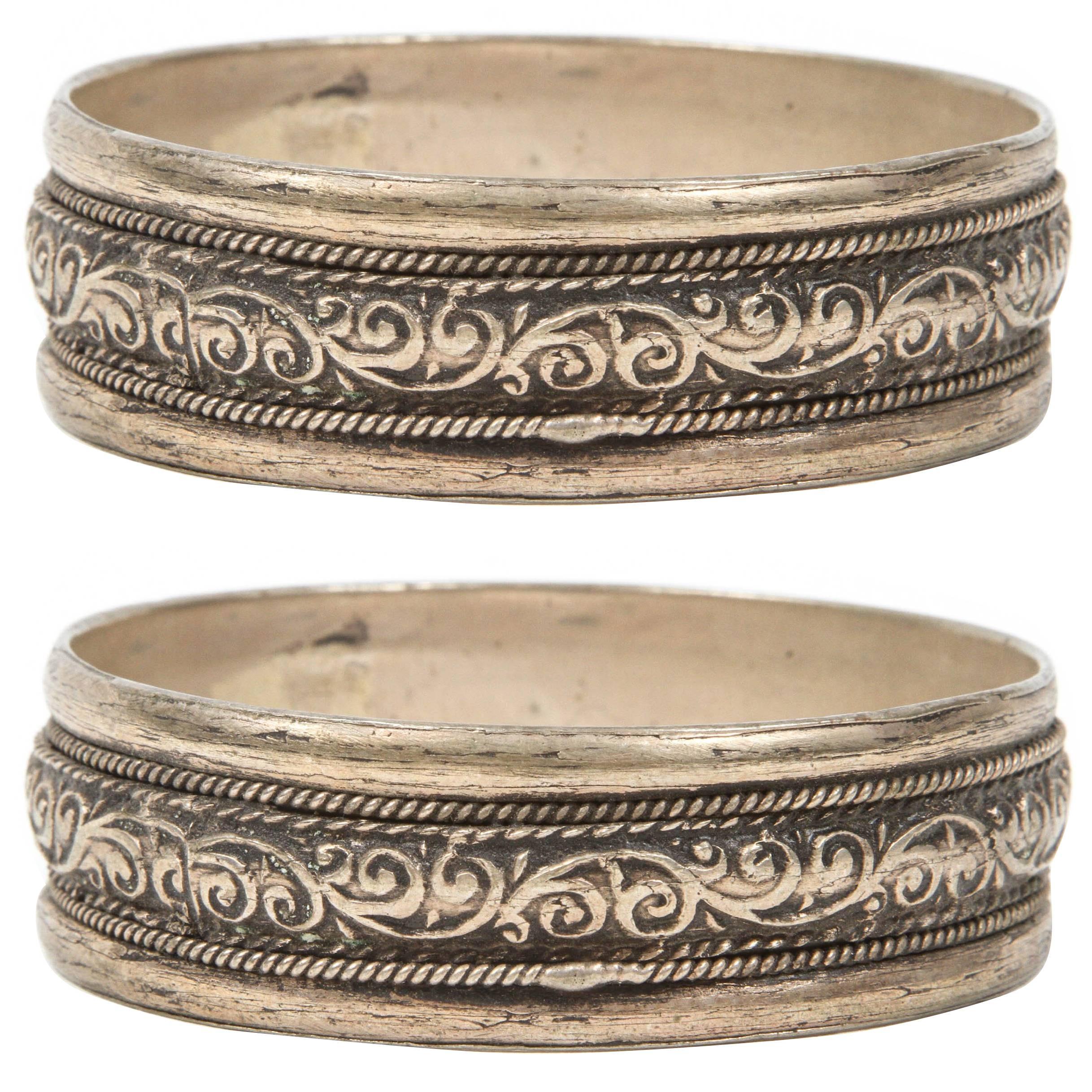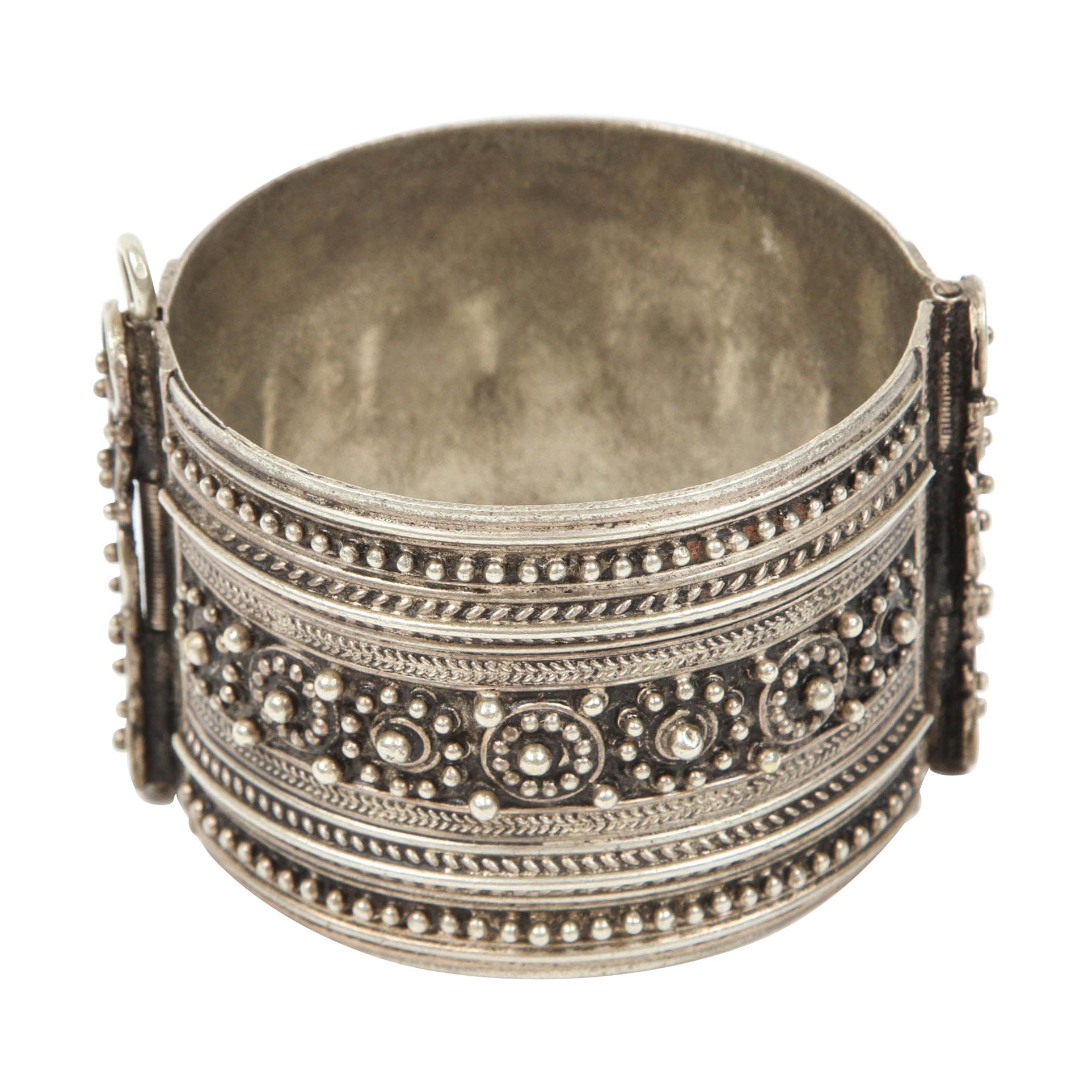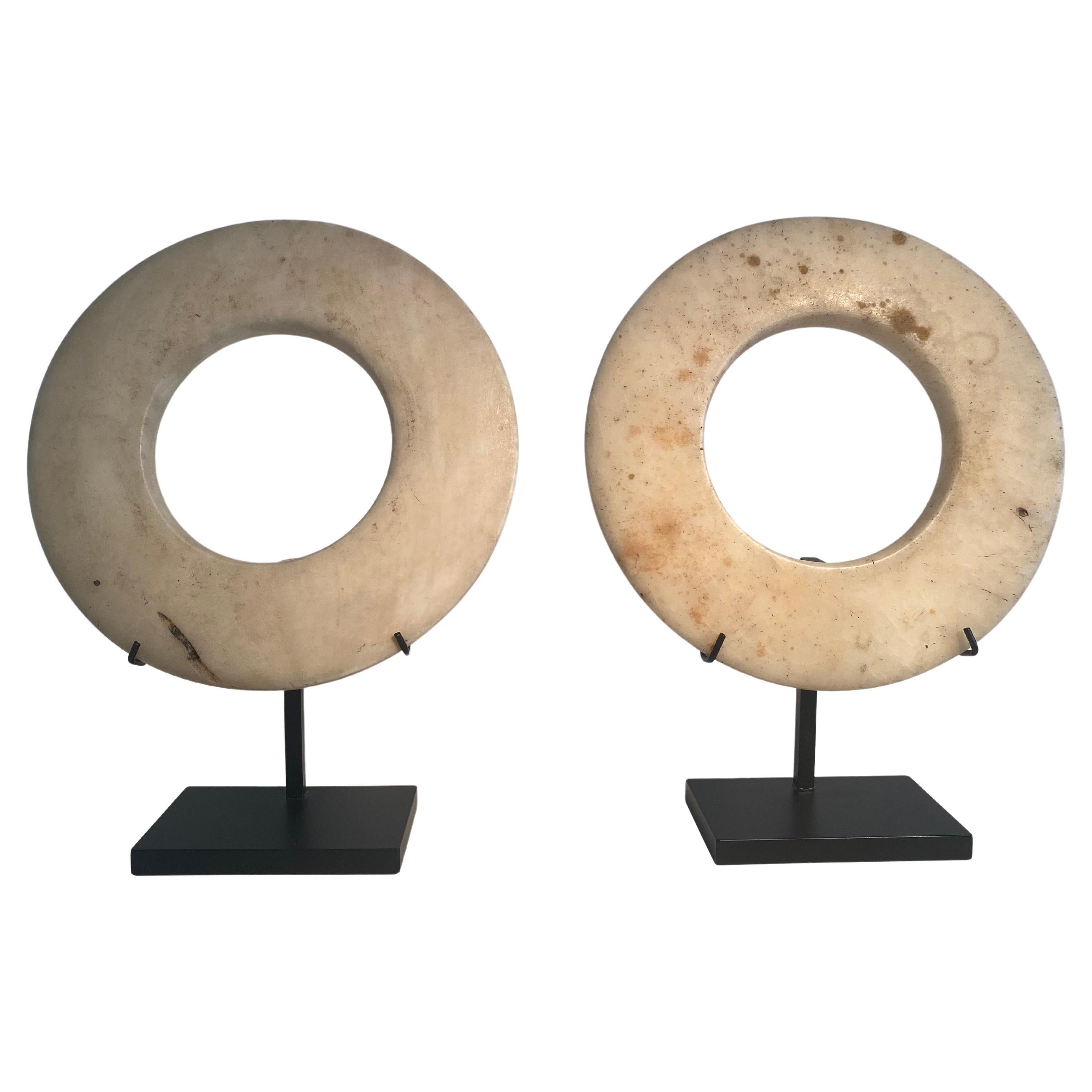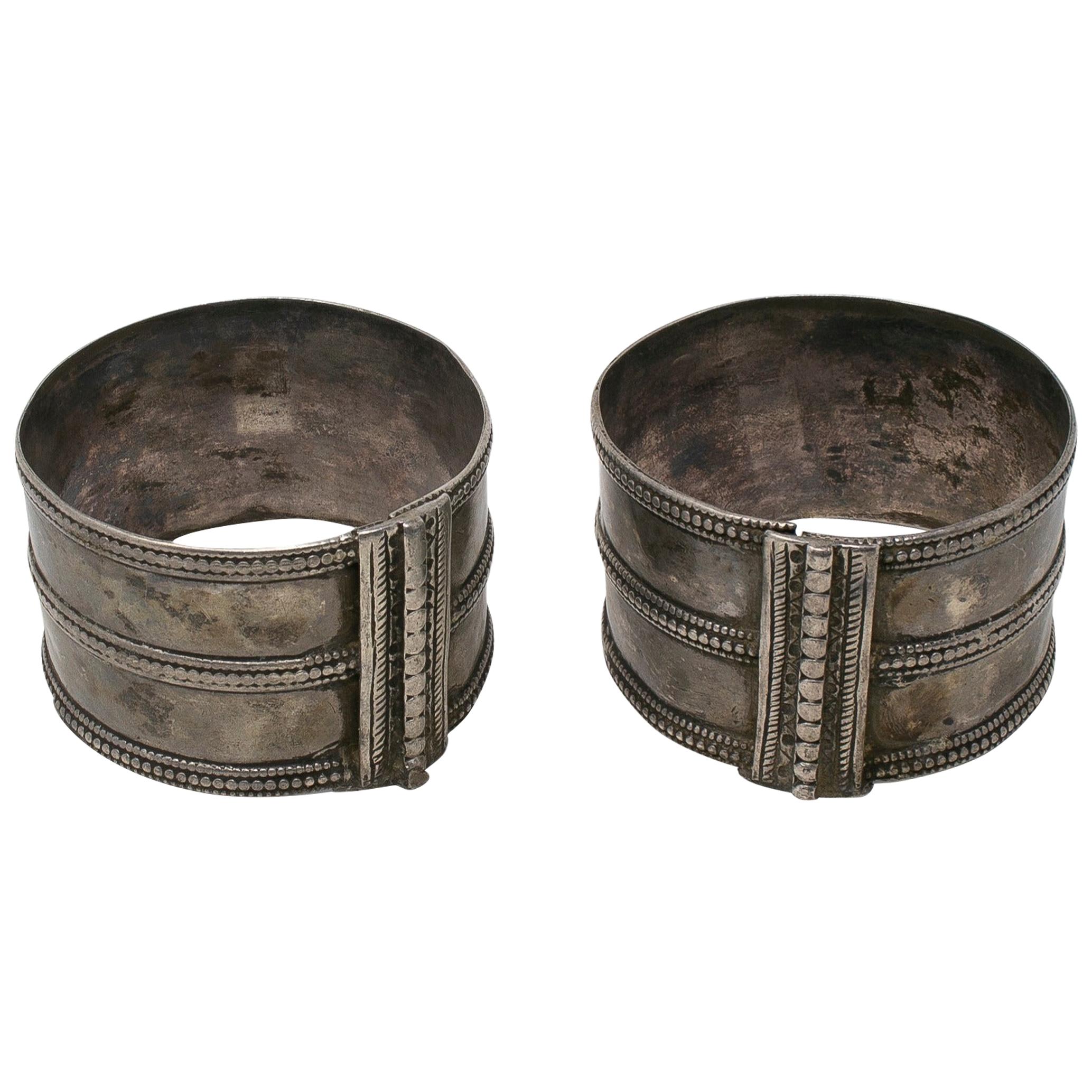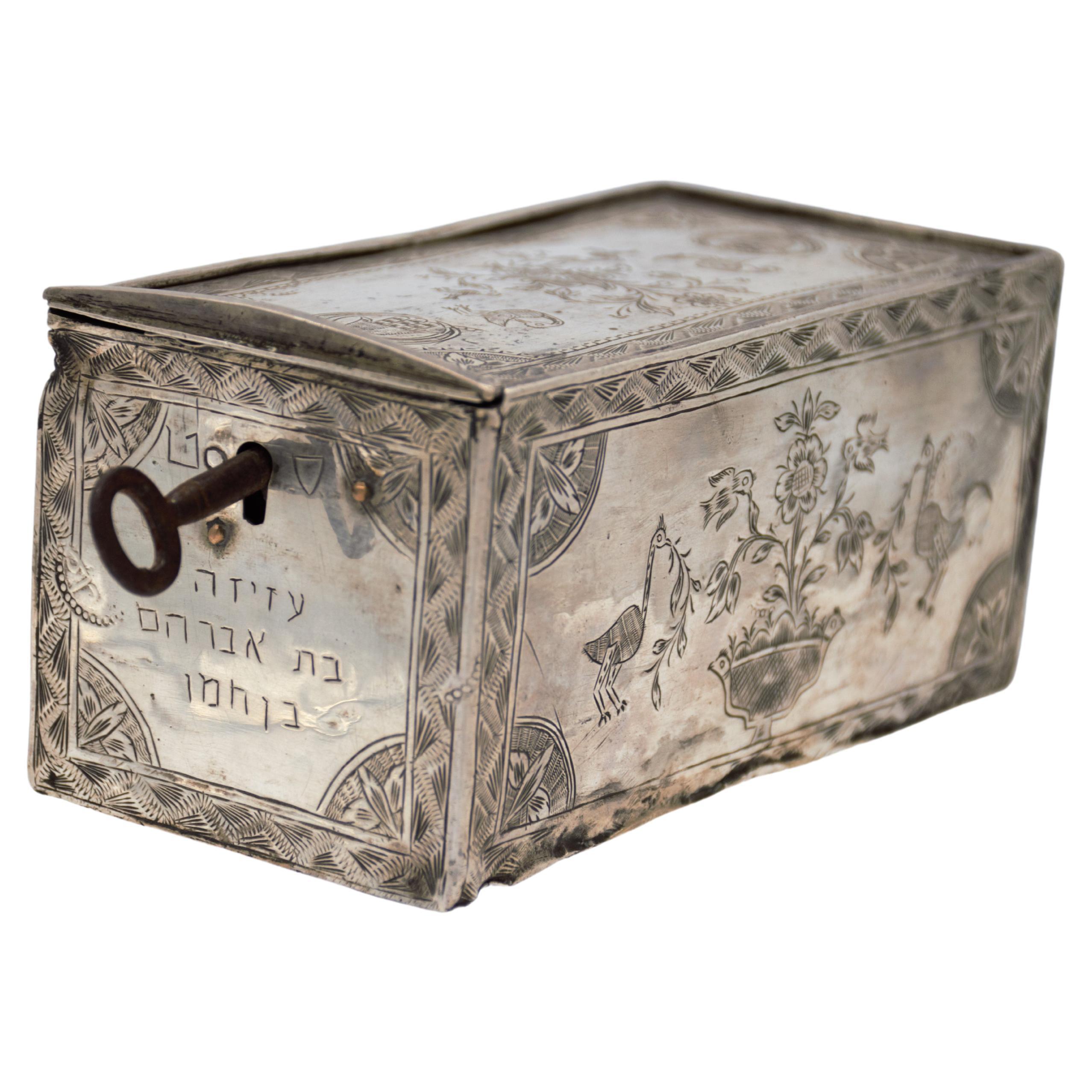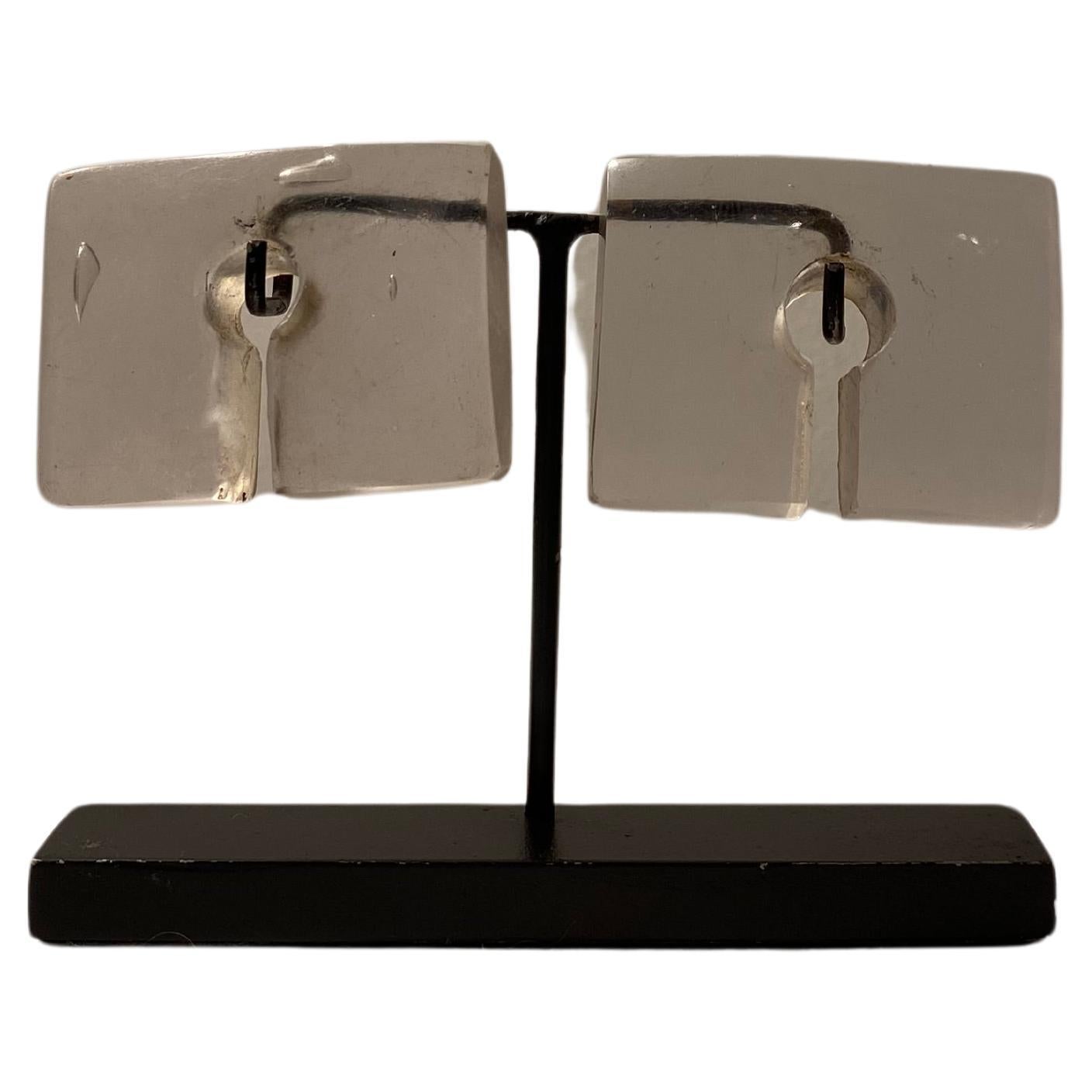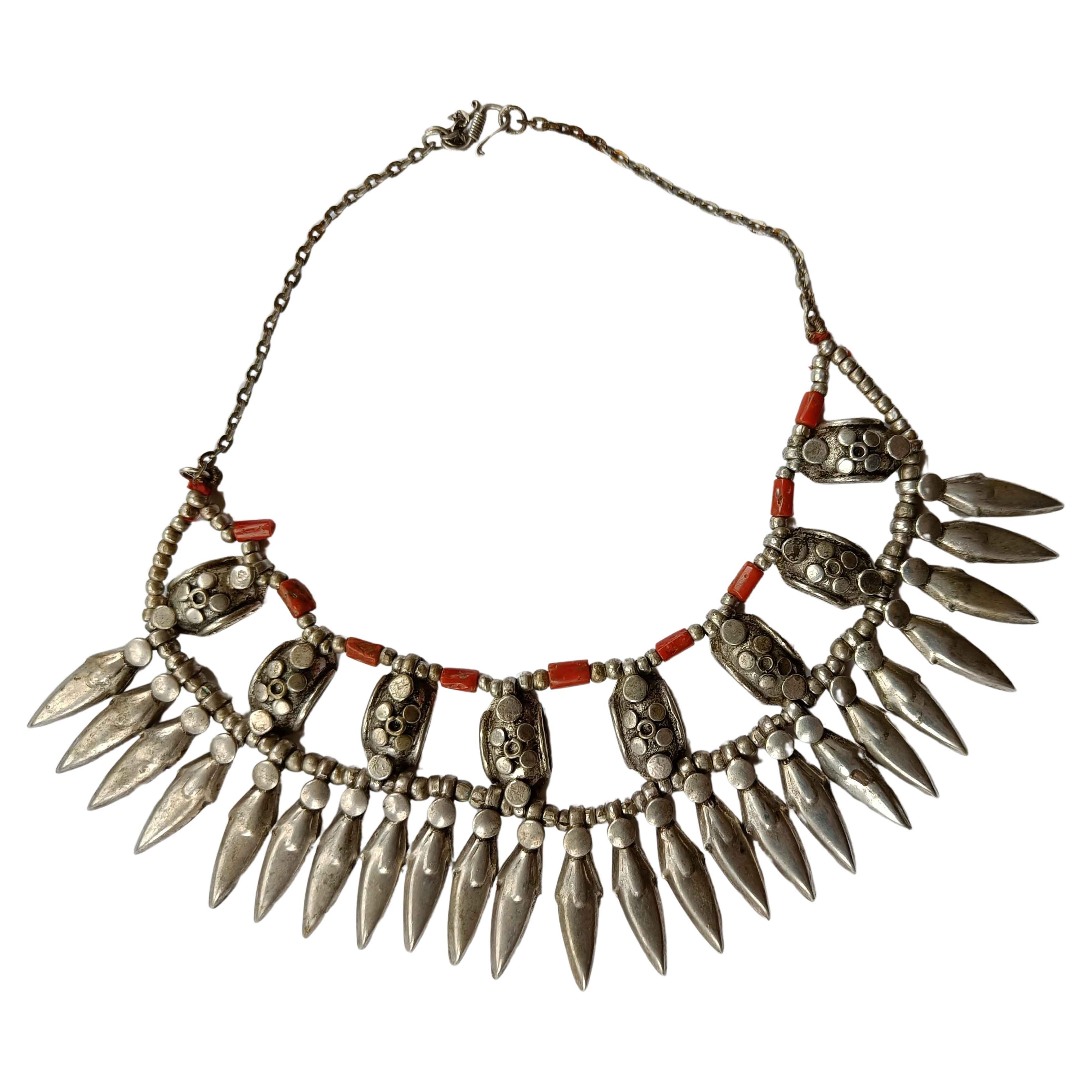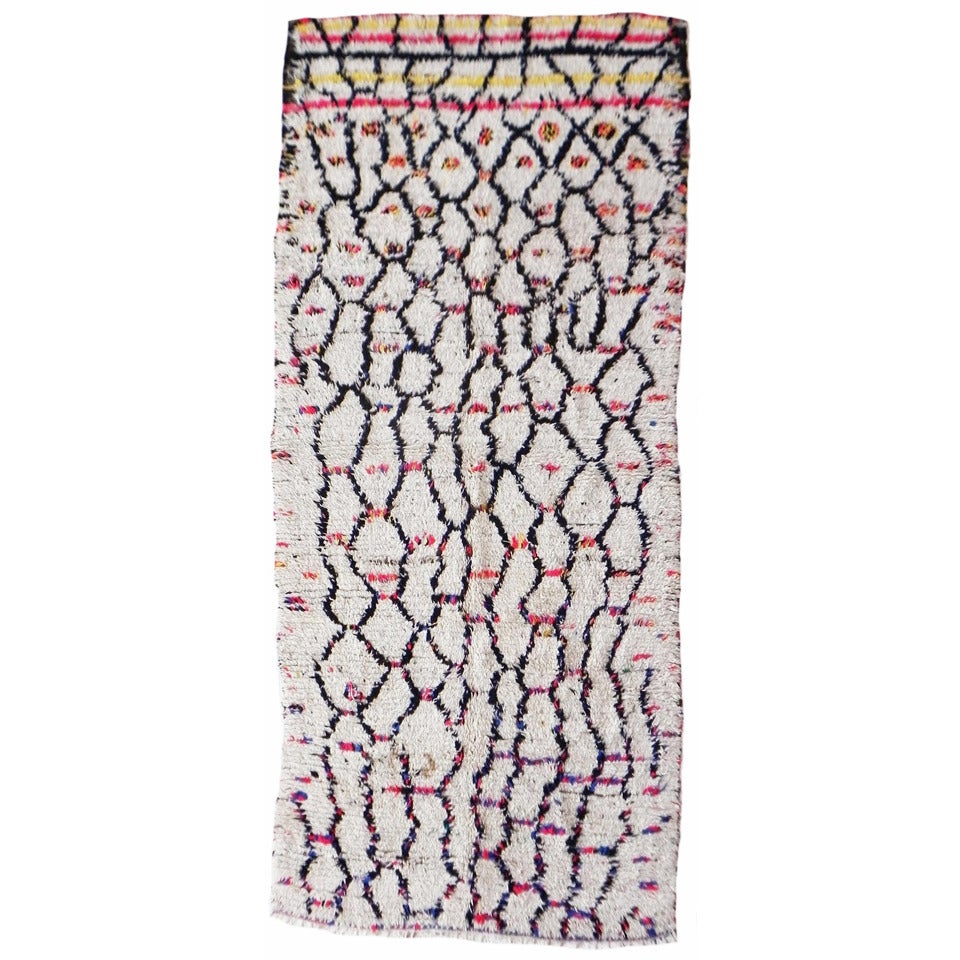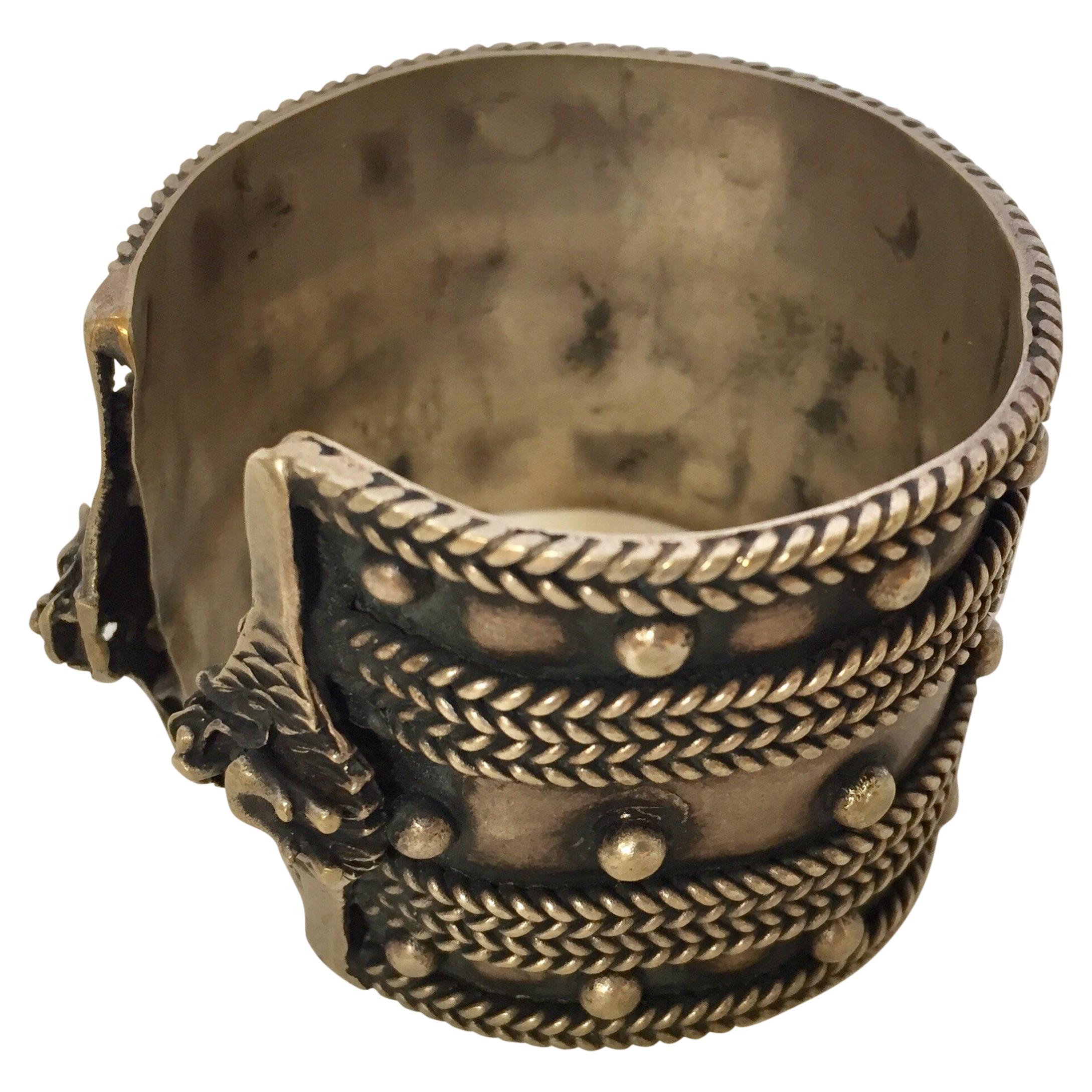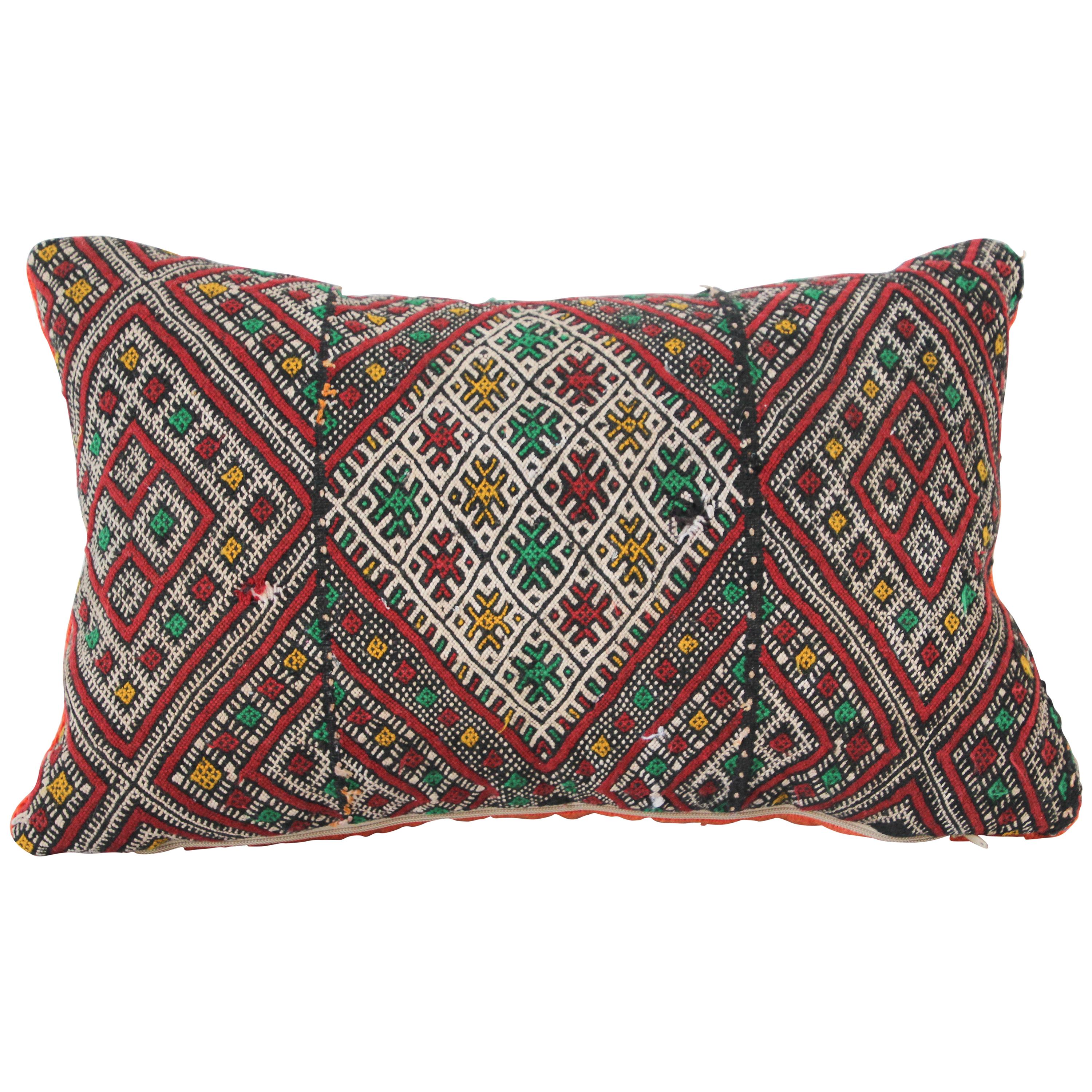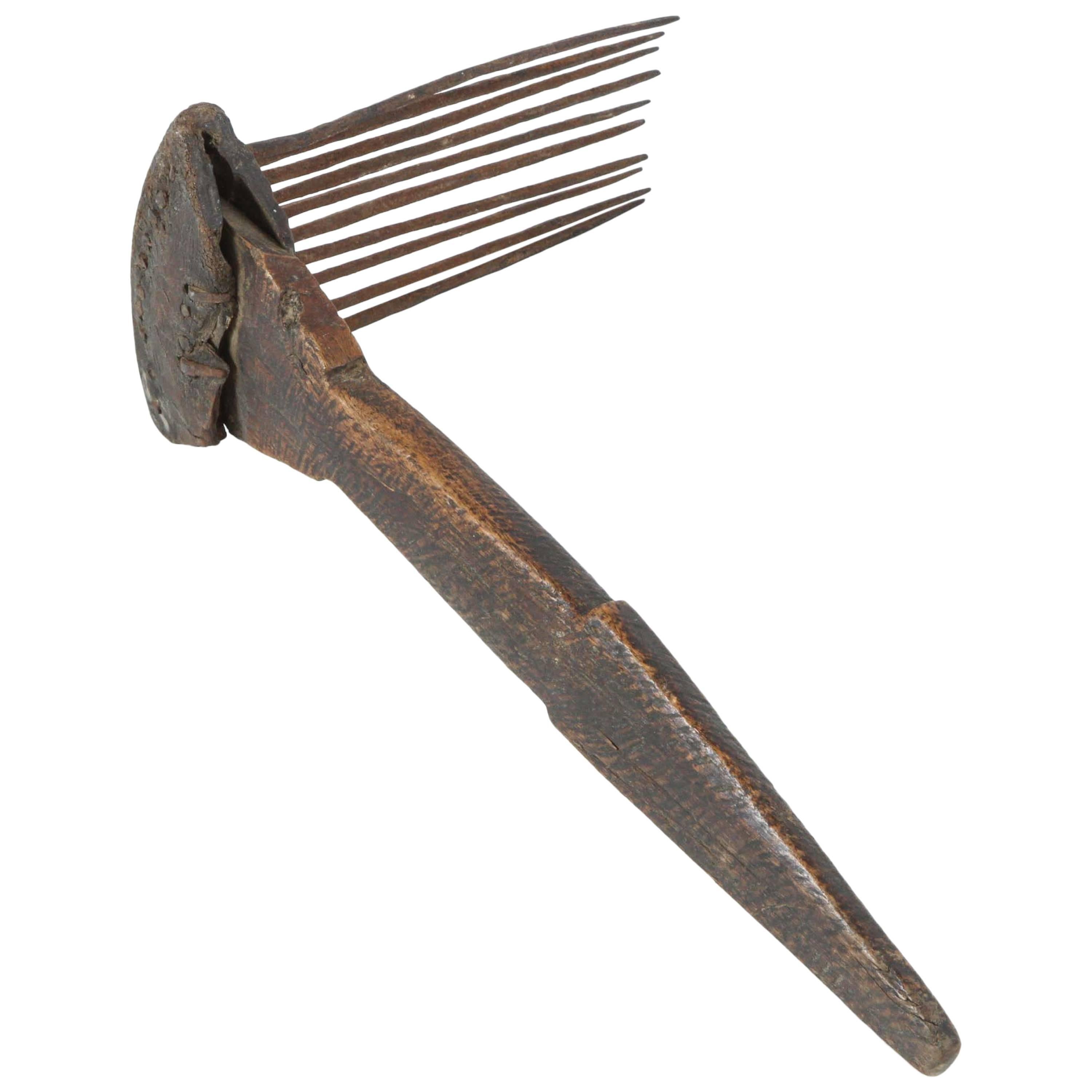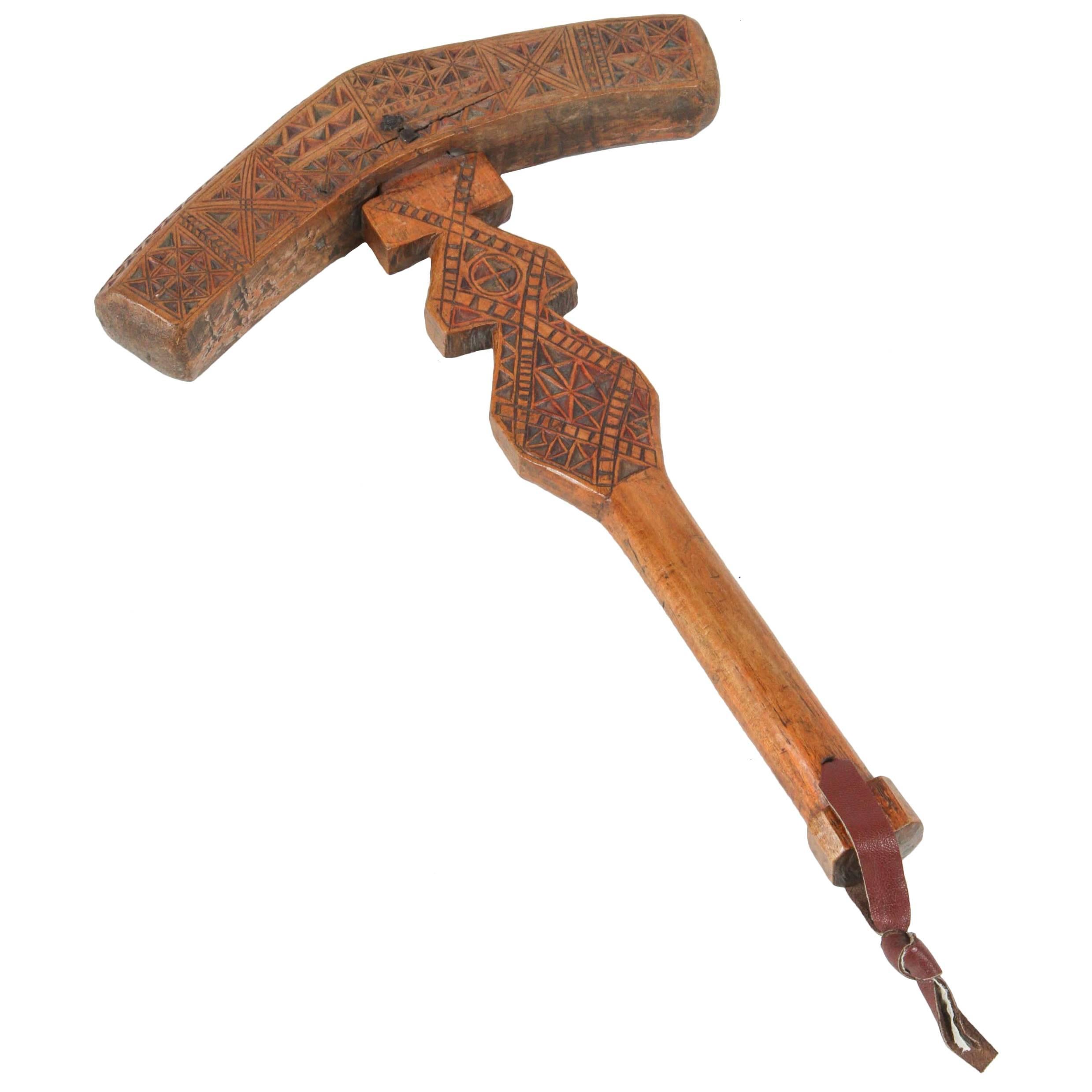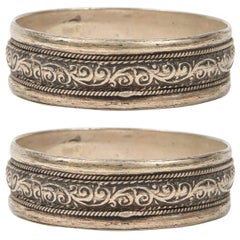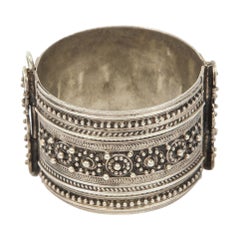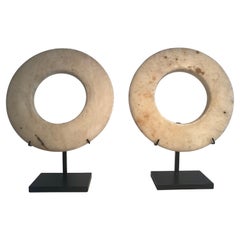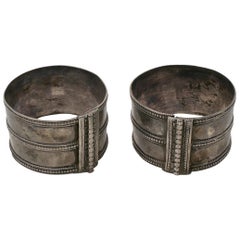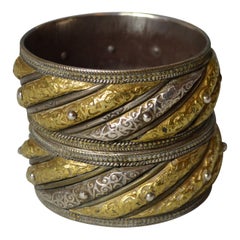
Rare Pair of Old Moroccan Jewish Silver Gold Marriage Bracelets Tribal Jewelry
View Similar Items
1 of 6
Rare Pair of Old Moroccan Jewish Silver Gold Marriage Bracelets Tribal Jewelry
$1,284.83List Price
About the Item
- Dimensions:Height: 2.96 in (7.5 cm)Width: 0.99 in (2.5 cm)Depth: 0.99 in (2.5 cm)
- Materials and Techniques:
- Place of Origin:
- Period:
- Date of Manufacture:19th Century
- Condition:Wear consistent with age and use.
- Seller Location:London, GB
- Reference Number:1stDibs: LU3650317228031
Authenticity Guarantee
In the unlikely event there’s an issue with an item’s authenticity, contact us within 1 year for a full refund. DetailsMoney-Back Guarantee
If your item is not as described, is damaged in transit, or does not arrive, contact us within 7 days for a full refund. Details24-Hour Cancellation
You have a 24-hour grace period in which to reconsider your purchase, with no questions asked.Vetted Professional Sellers
Our world-class sellers must adhere to strict standards for service and quality, maintaining the integrity of our listings.Price-Match Guarantee
If you find that a seller listed the same item for a lower price elsewhere, we’ll match it.Trusted Global Delivery
Our best-in-class carrier network provides specialized shipping options worldwide, including custom delivery.You May Also Like
Pair of Moroccan Berber Ethnic Silver Bracelets
By Berber Tribes of Morocco
Located in North Hollywood, CA
Pair of Moroccan Berber Tribal bracelets.
Moroccan Tribal bracelets from the High Atlas of Morocco.
Handcrafted by Berber women using Moroccan silver nickel.
The ethnic Nomadic and Bedouin jewelry...
Category
20th Century Moroccan Tribal Tribal Art
Materials
Metal, Silver
Moroccan Berber Tribal Silver Cuff
By Berber Tribes of Morocco
Located in North Hollywood, CA
Moroccan Berber tribal bracelet.
Moroccan ethnic bracelet from the High Atlas of Morocco.
Handcrafted by Berber women using Moroccan si...
Category
20th Century Moroccan Folk Art Collectible Jewelry
Materials
Metal, Silver
Ethnical Pair of Bracelets, Oceania
Located in Schellebelle, BE
Pair of Bracelets in Tridacna Gigas Shell,
Oceanie,
Collection of Dutch Monks, Pater Maristen,
great, good old patina,
very decorative pair of ob...
Category
Vintage 1920s Asian Tribal Art
Materials
Shell
1950s Pair of African Ethnic Bracelets
Located in Marbella, ES
1950s pair of African ethnic bracelets.
Category
Mid-20th Century African Antiquities
Materials
Silver
$2,097 / set
extremely rare Algerian Judaica silver, jewish Dowry box early 19th century
Located in Tel Aviv - Jaffa, IL
Amazing and scarce JUDAICA object, we have here one of the most touching jewish objects we had for a long time, this small silver dowry box was made in Algeria in the early 19th century, it is all covered with symbols of jewish faith and of couples, the sliding lid has 2 flanking birds with hamsa (protective hand) on each side and a flower vase in the middle.
one side shows two flanking lions with a tree in the middle and the other side shows again two big and two small birds with a flower bowl in the middle, front side has a key hole and next to it there is the Hebrew inscription ס״ט״" which says Siman tov or in English "a good sign" it is taken from the wedding blessing, underneath the lock there is another inscription with the name ״עזיזה בת אברהם בן חמו״ which is the name of the bride, her father and her grandfathers name.
the box is full marked a lot of times with the silversmith mark, every side of the box is marked.
this box was probably ordered by the grooms family to hold the jewelry they are giving to the bride as dowry, this type of objects are rare and there are just a few of them on museum collections.
DOWRY (Heb. נְדֻנְיָה), the property a wife brings to her husband at marriage; the Yiddish equivalent, nadn, is from the same root. The custom of nedunyah became clearly defined and institutionalized only in the talmudic period. In biblical times, mohar (מֹהַר), whereby the groom bought his wife from her father (Gen. 24:53; Ex. 22:15–16; Hos. 3:2), was the accepted practice. It was then customary that the groom give the bride gifts, and that she bring certain property to her husband's home upon marriage: slaves, cattle, real estate, etc. (cf. Gen. 24:59–61; 29; Judg. 1:14ff.; I Kings 9:16). Evidence of the custom of nedunyah is to be found in Tobit (7:14; 8:21) and in the Assuan papyri (Cowley, Aramaic, nos. 15, 18). Gradually, mohar was superseded by the ketubbah custom according to which the husband merely assumed the responsibility of compensation to his wife in case he divorced her: he had to pay her 200 zuzim if she had been a virgin at the time of marriage, and 100 zuzim if a widow or divorcée (see *Ketubbah).
By talmudic times, the institution of nedunyah was prevalent; the father gave a dowry to the bride since the daughter was excluded from paternal inheritance. Fifty zuzim (equivalent to the worth of 180 grams of silver) was the minimum amount a father was obliged to give to his daughter (Ket. 6:5). Parents usually gave much more, according to their social standing. Community funds provided the dowry for an orphan or a very poor girl (ibid.; cf. Sh. Ar., YD 251:8). In case of her father's death, the brothers of a minor girl were obliged to give her the minimum dowry, and the court estimated how much her father would have given her above the minimum dowry. The sum was then taken out of the father's estate and given to the daughter upon majority (Ket. 6:6; 68a–69b). In the absence of such an estimate, each daughter was entitled to receive one-tenth of the value of her father's estate in money, or in valuables (Yad, Ishut, 20:4–7; Sh. Ar., EH 113:4). If the father was unable or unwilling to pay the promised dowry at the betrothal ceremony, the groom could refuse to marry his bride (Ket. 13:5; Ket. 108b–109a). Insistence on exact payment of the promised dowry, however, was frowned upon by later rabbinic authorities (Rema to Sh. Ar., EH 2:1). In certain communities it was customary for the groom's father to make a dowry contribution equal to that of the bride's father (Ket. 102b). The dowry, whether given in real estate, slaves, money, or chattel was recorded in the marriage contract (the ketubbah) and in some instances one-third or one-fifth of the actual value of the dowry was added to the sum mentioned in the ketubbah. Based upon a decree enacted by *Simeon b. Shetah (first century C.E.), the Talmud ruled that the husband and his entire property were liable for compensation as stipulated in the ketubbah, either in case he died (when she collected the sum specified in the ketubbah from the heirs) or in case he divorced his wife (Ket. 82b). For the status of the dowry and the husband's rights and obligations, see below. The rabbinic enactments (Takkanot Shum) by R. Jacob *Tam and by the rabbinic synod of the communities of Speyer, Worms, and Mainz (Germany) stipulated that if a woman died...
Category
Antique Mid-19th Century Algerian Tribal Art
Materials
Silver
Pair of Tribal Earrings
Located in Schellebelle, BE
Exceptional pair of Earrings in Rock Crystal from the Naga Tribe in
India,great shine and color of the Crystal,
very decorative objects to put in your Cabinet de Curiosites
Category
Vintage 1960s Indian Tribal Art
Materials
Rock Crystal
$1,106
Recently Viewed
View AllMore Ways To Browse
Antique Moroccan Jewelry
Antique Tribal Silver Jewelry
Moroccan Jewish
Jewish Morocco Antique
Congo Tribal Art
Vintage African Beads
Furniture Ethiopia
Antique African Tribal Art
Burkina Faso
Tribal Shield
Vintage Tribal Beads
African Carved Female
Ethiopian Antique
African Carved Heads
African Wife
Tribal Art New Guinea
African Carved Face
Mali African Art
